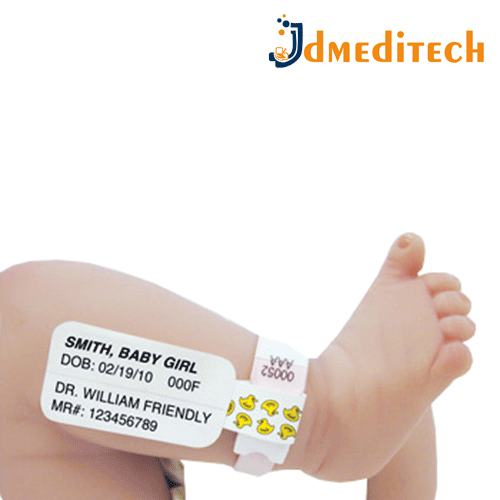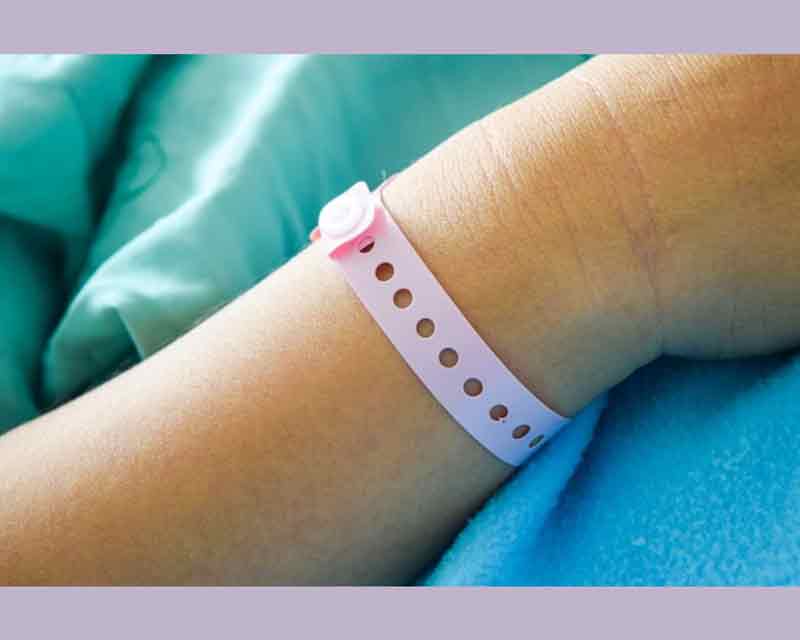How a Patient Identification Band Improves Patient Treatment and Reduces Dangers
How a Patient Identification Band Improves Patient Treatment and Reduces Dangers
Blog Article
Exploring the Numerous Kinds Of Patient Identification Band Utilized in Medical Facilities
In the elaborate globe of healthcare, the crucial function of Patient Identification bands often goes undetected. These bands, differing from easy paper wristbands to advanced RFID bands, develop the backbone of Patient safety procedures, making certain accuracy in Patient Identification. The substantial variety of these bands, each with its unique advantages and constraints, is commonly ignored. As we navigate through this subject, one may get understanding into the refined intricacies and crucial relevance of such bands in clinical facilities.
Recognizing the Value of Patient Identification Bands
While they might appear like mere devices, Patient Identification bands play an important function in clinical centers. These bands act as an important device for confirming Patient identity, avoiding clinical mistakes connected to misidentification. The bands generally present essential information such as the Patient's name, age, blood group, and any known allergies. They allow healthcare experts to swiftly access this essential information, consequently assisting in timely and accurate medical therapy. Patient Identification bands additionally help in simplifying management tasks, making sure accurate record-keeping and billing. Regardless of their simplicity, these bands embody the principle of Patient security, a keystone of high quality health and wellness care. Without them, the risk of medical errors, and subsequently, Patient injury, could dramatically increase.
Traditional Paper Wristbands: Their Use and Limitations
Typical paper wristbands have actually been a staple in Patient Identification throughout different clinical facilities. While their usage prevails, they harbor particular limitations that might influence their effectiveness in Patient management. This section will focus on the scope of their application and the intrinsic drawbacks related to their use.
Paper Wristbands: Use Extent
In the realm of Patient Identification, paper wristbands have long held a crucial function. These bands are typically utilized in outpatient settings, where the Patient's remain is momentary. The wristbands consist of crucial information such as the Patient's name, day of birth, and an one-of-a-kind Identification number. This basic, yet effective system, permits physician to rapidly and accurately recognize patients, guaranteeing the appropriate treatment is carried out. Paper wristbands are likewise utilized in emergency scenarios, where rapid Identification is vital. Their use prolongs to events like blood contribution drives and mass inoculation programs, additionally emphasizing their adaptability. Despite innovations in technology, the simple paper wristband remains a trustworthy and cost-effective option for Patient Identification in various health care situations.
Limitations of Paper Wristbands
Regardless of their extensive usage, paper wristbands are not without their downsides. In addition, paper wristbands frequently do not have the technical capabilities of more modern-day alternatives, such as barcoding or RFID chips, limiting their performance to just presenting created details. Paper wristbands can cause pain or skin inflammation to some people, especially when put on for prolonged periods.
Barcoded Wristbands: Advancements in Patient Identification
While Patient Identification has actually long been an essential facet of health care, the development of barcoded wristbands indicates a significant jump ahead. These bands take advantage of the simplicity of barcoding innovation, permitting for Patient information to be quickly checked and accessed. They improve the speed and precision of Patient Identification, lowering the danger of medical errors related to misidentification.
Radio Frequency Identification (RFID) Bands: a Step Towards Futuristic Healthcare
The advancement of Patient Identification bands has actually brought about the emergence of Superhigh frequency Identification (RFID) Bands (patient identification band). These cutting-edge gadgets existing crucial benefits for health care centers, providing a much more effective and highly progressed ways of Patient Identification. The execution of RFID in healthcare is a considerable action in the direction of a much more advanced approach to Patient administration and safety
Comprehending RFID Bands

RFID Bands: Key Benefits
Accepting a future where innovation and health care merge, superhigh frequency Identification bands provide numerous key benefits. Mainly, these bands boost Patient security by offering exact, instant Identification, thus lowering medical errors. RFID bands can keep a huge amount of Patient data, consisting of medical background and allergic reactions, allowing customized treatment. They likewise streamline administrative tasks, as the automated data entrance changes hands-on processes, improving efficiency and reducing documentation. In addition, RFID bands use real-time tracking of clients, vital in risky atmospheres such as surgery or intensive care. These bands are resistant and durable to environmental elements, ensuring regular performance. On the whole, RFID bands represent a significant advancement in Patient Identification modern technology, profiting both individuals and health care providers.
Carrying Out RFID in Health Care
As we enter a highly innovative period, the implementation of RFID bands in healthcare ends up being progressively vital. These bands offer a seamless way to track and determine patients, guaranteeing their security and boosting performance in treatment procedures. RFID bands supply numerous advantages over conventional Identification methods. They can save a vast amount of data, consisting of the Patient's case history and treatment plans, which can be conveniently accessed by doctor. This information helps physicians make notified decisions relating to the Patient's therapy plan. RFID bands decrease medical mistakes by giving exact Patient Identification, which is essential in protecting against misdiagnosis or incorrect medicine administration. Hence, the implementation of RFID bands is a considerable step in the direction of improving Patient safety and security and medical care delivery.

Color-Coded Wristbands: Helping in Quick and Accurate Diagnosis
In the dynamic have a peek at this website environment of a clinical facility, color-coded wristbands click for source have arised as essential devices for swift and exact Identification of a patient's medical problem. These wristbands, put on by individuals, bring particular shades that correspond to different medical problems or statuses. This system is developed to provide instant visual hints to medical care service providers, boosting Patient safety and security and care top quality.
Methods for Effective Application and Monitoring of Patient ID Bands
Accomplishing optimal use of Patient Identification bands demands a well-structured technique for their implementation and administration. The initial step involves training all health and wellness workers on the importance of appropriately using and checking out these bands. Medical facilities must standardize the usage of ID bands throughout all departments, making certain harmony and decreasing discrepancies. Regular audits needs to be conducted to confirm adherence to policies and to fix any kind of variances. Patient education is additionally essential; patients must comprehend the objective of the bands and the need for their constant wear. patient identification band. It's vital to have a back-up strategy in area, such as barcode scanning or biometrics, to make sure that Patient Identification is never endangered.
Final thought
Patient Identification bands are important in medical centers to guarantee safety and accuracy. Traditional paper, barcoded, RFID, and color-coded wristbands each hold distinct advantages, varying from cost-effectiveness to innovative data storage and immediate clinical informs. Effective implementation and administration try here of these bands can significantly decrease clinical mistakes, boost efficiency, and enhance total Patient treatment. Therefore, understanding and using these Identification tools is vital for preserving high criteria in medical care.
These bands, differing from easy paper wristbands to sophisticated RFID bands, create the backbone of Patient safety and security procedures, ensuring accuracy in Patient Identification.The development of Patient Identification bands has actually brought regarding the emergence of Radio Regularity Identification (RFID) Bands. Generally, RFID bands stand for a significant improvement in Patient Identification modern technology, profiting both clients and medical care suppliers.
RFID bands decrease medical mistakes by providing exact Patient Identification, which is crucial in protecting against misdiagnosis or wrong medication administration. Patient education and learning is also vital; individuals have to understand the purpose of the bands and the need for their constant wear.
Report this page